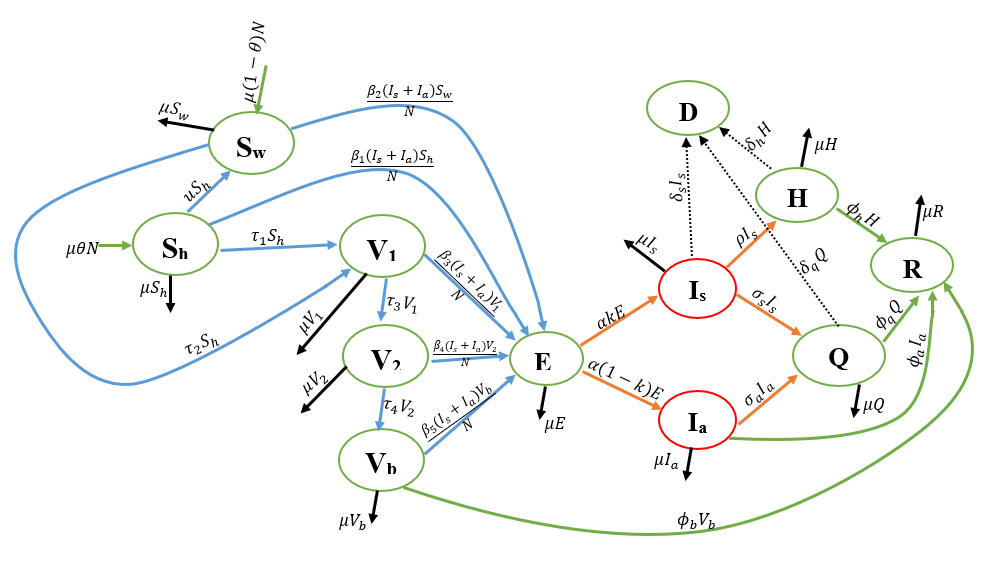The dynamics of hybrid-immune and immunodeficient susceptible individuals and the three stages of COVID-19 vaccination
Keywords:
COVID-19, Vaccination, Heterogeneous immunity, Parameter estimation, Optimal controlAbstract
The World Health Organization has disclosed that the hybrid-immune and immunodeficient individuals are two distinct classes of individuals susceptible to the COVID-19 virus. To model this unique characteristics of two distinct categories of susceptible individuals and the dynamics of the three phases of a vaccination program implemented by the World Health Organization in Malaysia, which have not been accounted for in previous studies, a twelve compartmental SSVEIHQR-D epidemiological model was developed. This model aimed to accurately capture the spread of the COVID-19 virus by fitting real-life data to the model and obtaining updated estimates of the reproduction number. The study also focused on assessing current control measures and exploring strategies to eradicate the virus and mitigate future outbreaks. Mathematical analyses of the model included investigations into stability, equilibrium points, the basic reproduction number R0, optimal control strategies, and sensitivity analyses. Estimation and fitting of the model parameters were conducted using daily situation reports from the Ministry of Health of Malaysia. The obtained value of the basic reproduction number, based on fitted parameter values, indicated stability and reflected the current pandemic situation more realistically. Additionally, the herd immunity threshold was calculated and interpreted in the context of the study findings. Finally, practical insights and recommendations derived from the model’s results were provided to inform government agencies, public health organizations, and intervention bodies, aimed at controlling the spread of the COVID-19 virus.

Published
How to Cite
Issue
Section
Copyright (c) 2024 E. A. Nwaibeh, M. K. M. Ali, M. O. Adewole

This work is licensed under a Creative Commons Attribution 4.0 International License.







